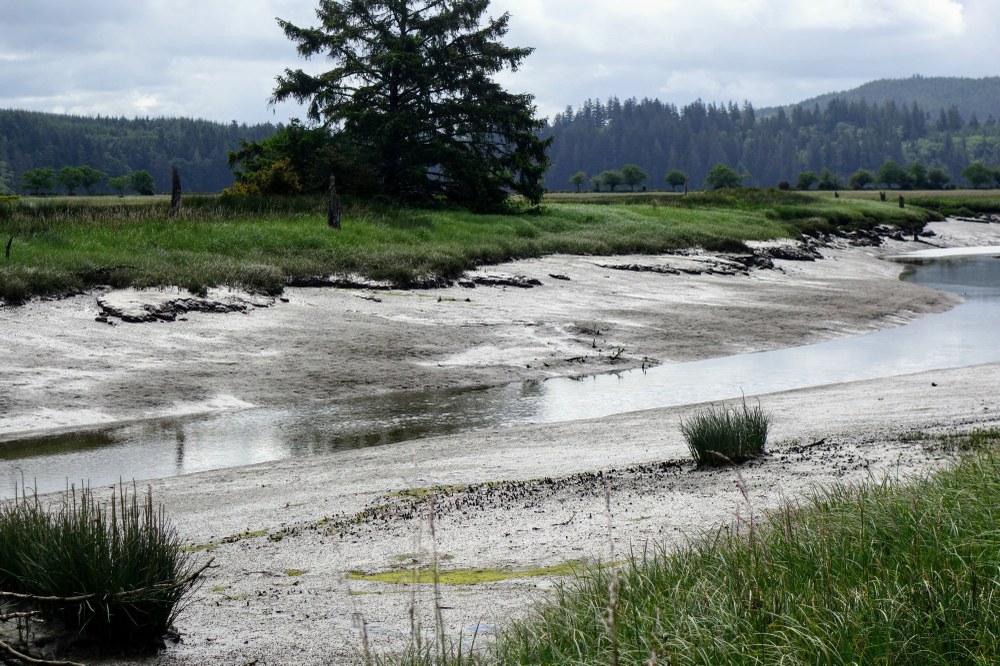
Recently, Mountaineers Richard Burt, Lynn Graf, and I took a canoe-camping trip to Long Island in Willapa Bay, an uninhabited five mile long, one mile wide National Wildlife Refuge in southwest Washington. Despite bucking a headwind as we paddled for an hour or so on an outgoing tide, we became ensconced in a sheltered, secure waterfront site that allowed us to observe the endless mudflats that are exposed after the tidal retreat.
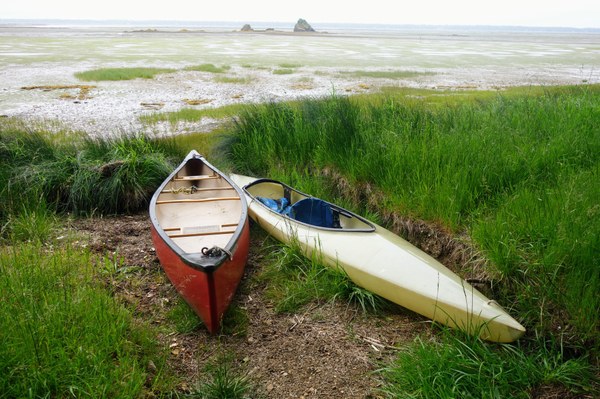
photo by Bruce barcklow.
We started our exploration on an overgrown logging road, having the island for most of our stay completely to ourselves. Logging halted in the 1950’s, leaving a second growth of mostly Western Hemlock and uncut Sitka Spruce. But a magnificent stand of old growth Western Red Cedar, 900-1200 years old, was spared thanks to the efforts of the late State Senator Don Bonker, to whom the 86-acre grove is dedicated. (Thank you Senator Bonker.)
Long Island is noted for its considerable herd of Roosevelt Elk which are pursued each September by bow hunters. The current record Roosevelt Elk was harvested from Long Island. We saw several small bands of elk on the island perimeter, in the voluminous meadows that are divided by the elongated fingers of the bay, filling and emptying.
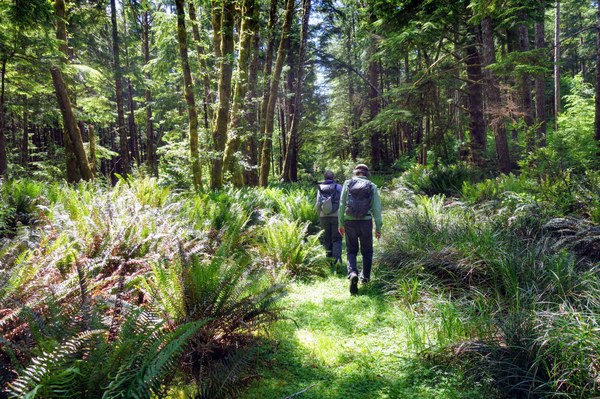
PHOTO BY BRUCE BARCKLOW.
One evening Lynn encountered a fearless porcupine only yards away from our tents, captivated by our paddles. Richard balanced the paddles and life jackets, anything that could have been appetizingly salty, on a stump that functioned as either a hopeful obstacle or a booby trap. On the trail we encountered multiple distinctive scats. Judging by their mass, some were obviously deposited by a bear, along with others of unknown origin. We observed raccoons digging for clams in the mudflats. Rough-Skinned Newts in the grasses. Any other wildlife was up to our imagination.
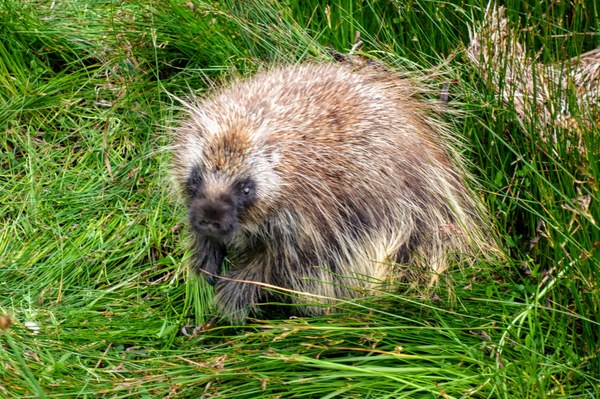
the fearless porcupine. PHOTO BY BRUCE BARCKLOW.
By definition, an island is limited. There are no real vistas or much variation of elevation on this island - or really, much variation of any kind. Several hours of walking through the enveloping forest could be considered either “mind-numbing” or “mystical”. If a sense of endless expanse, spaciousness, and “conquest” is what thrills you, then you are in the wrong place, because an island like this will do nothing but swallow you up.
We were very surprised when one afternoon in a sunny, open part of the road, alongside a red-stained cedar-water marsh, we startled a butterfly that looked like it would have been more at home in Costa Rica. It had a lazy flutter and settled cooperatively on tall weeds. As we walked, what we thought was only a single, distinctive butterfly turned out to be households of them, and this was their domain. We theorized about what attracted them to this spot - temperature, light, water, food. Lynn took a quick photo on iNaturalist, an app that not only offers immediate options for identification, but can connect you to other observers in the area (or around the world).
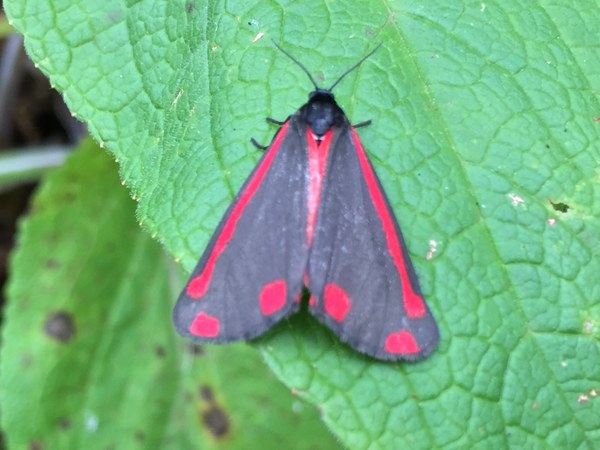
The mysterious butterfly. PHOTO BY lynn graf.
Despite our seeming isolation, we had cell service and internet connectivity! It turned out that we had bumped into a Cinnabar Moth. Our theorizing was soon answered. The Cinnabar Moth is an introduced species from the Mediterranean area, not native. It was introduced for the express purpose of helping to eradicate Tansy Ragwort, a weed that is toxic to ungulates. Its larvae feasted on Ragwort. The waist-high weed that we were now looking at and brushing through.
Perhaps the Wildlife Service felt that the elk population might be threatened by Tansy Ragwort and carried a small population of moths to this spot? Could the moths have found their own way here - in the interior of a thickly forested island? All we knew is that we had learned something and had wondered about something else. The limitedness of an island gives one time to wonder. There is really no place to need to hurry to. A limited place becomes all about atmosphere and after a while there is a blurring between the mood of the place and the mood of the explorer. It was becoming difficult to know whether we were exploring, or whether we were being explored.
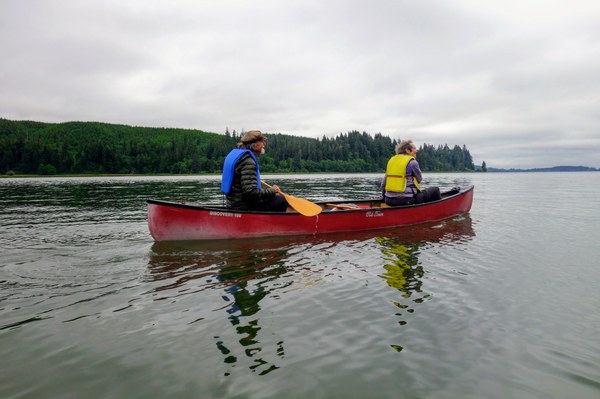
PHOTO BY BRUCE BARCKLOW
Our egress from Long Island was much less laborious than our entrance. We rode a flood tide and had a tailwind most of the way. Within sight of the boat launch where we had initially put in we saw a bull elk wandering tentatively in a small meadow, and an osprey soaring in the air. The bay was nothing but an expanse of open water lapping at a green shore, now pushing us away, by wave and current, having had its fill of us.
Add a comment
Log in to add comments.Lovely. Thank you.
 Bruce Barcklow
Bruce Barcklow